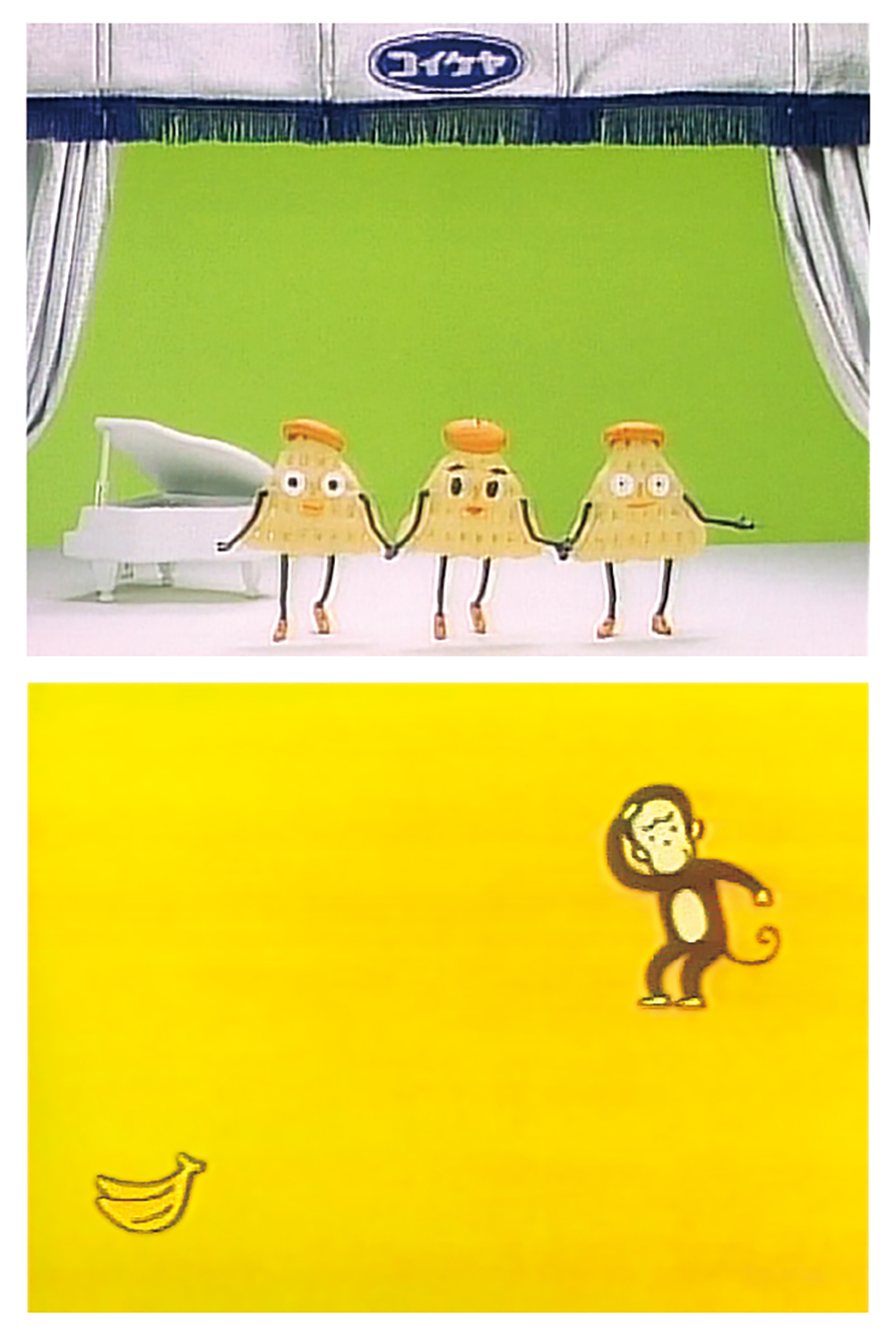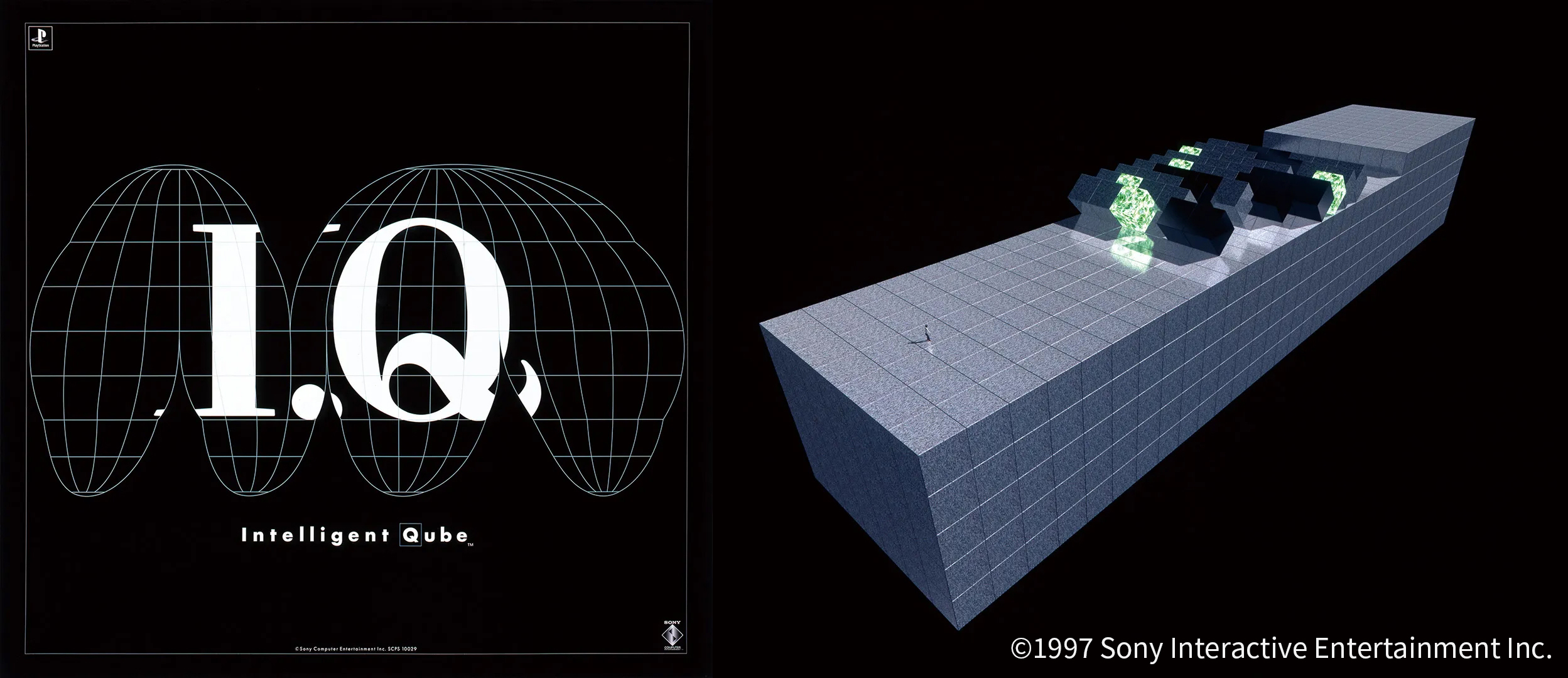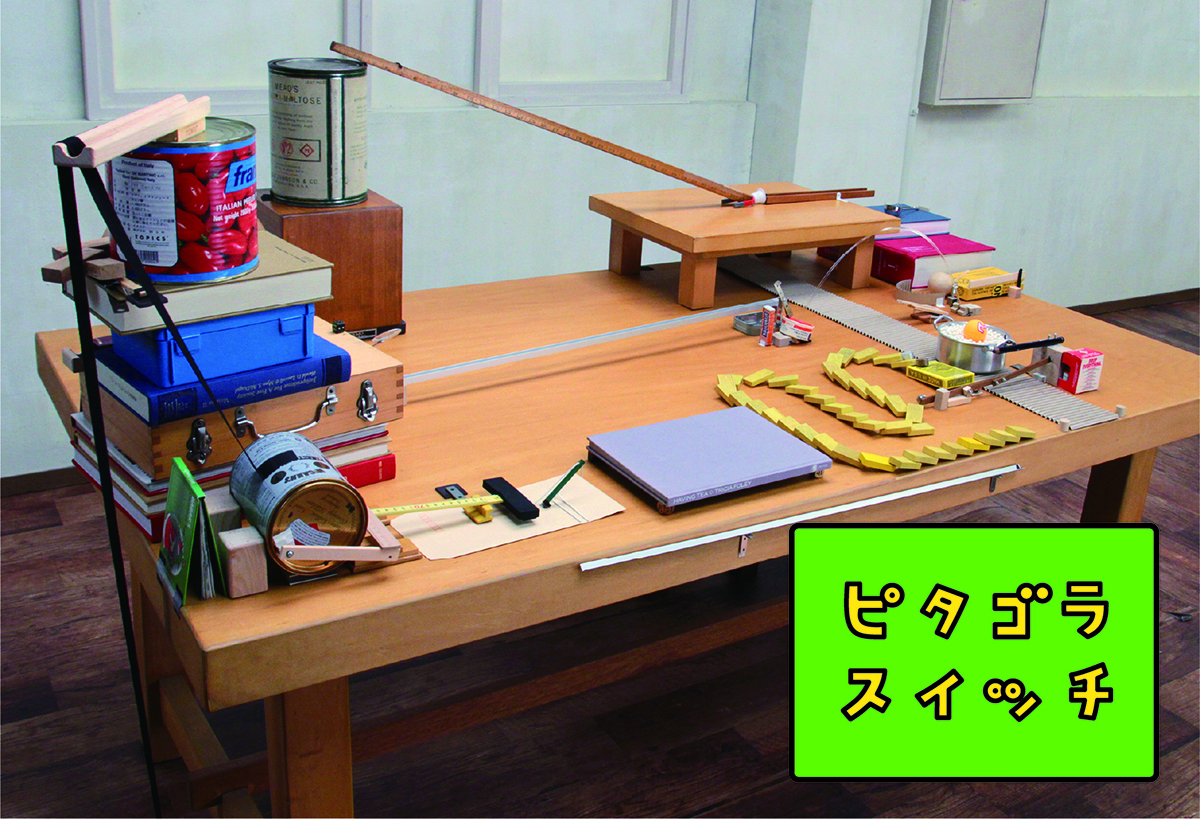SATO MASAHIKO EXHIBITION NEW × (WAY OF MAKING + WAY OF UNDERSTANDING)
HAPPENINGText: Alma Reyes
Some rare displays include Sato’s “Sound Helmet” (1980) headphones and “YMO Techno Badge” (1981) distributed for the promotion of the FUJI Cassette ad that featured the legendary electronic band Yellow Magic Orchestra.

Masahiko Sato, Top: The Secret of Polinky, Polinky (KOIKE-YA), 1990; Bottom: Bazar dé Gozarre (NEC), 1991, Collection of The Ad Museum Tokyo
Two mini theaters run about seventy commercial clips that reflect Sato’s specific “rules” in commercial making. One of them is “starting with sound,” a technique of incorporating sound and rhythm as more effective tools than images in getting people’s attention. Another rule is to arbitrarily come up with one’s own ideas to be able to perceive things from a different perspective and create new forms of expression. We grasp these parameters in commercials such as “The Secret of Polinky, KOIKE-YA” (1990) and “Bazar dé Gozarre, NEC.” (1991) In “The Secret of Polinky, KOIKE-YA,” three snack characters dance amusingly in perfect sync with the comical lyrics conveying the secrecy of the product’s delicious quality. “Bazar dé Gozarre, NEC,” a short skit for NEC’s sales promotion campaign, depicts the company’s official monkey mascot that encounters hilarious obstacles on the way to NEC. His crafty strategy of blending sound, tempo, and staccato phrasing has made his commercials an absolute success.
By the late 1990s, Sato discovered a new concept of “Tone.” The scheme imbues unique worldviews surrounded by appealing sounds echoed in captivating scenarios, which intensify the product’s brand image. This innovative direction was evident in the commercials, “The MALT’S (SUNTORY)” and “COROLLA_II (TOYOTA).”

Masahiko Sato, I.Q Intelligent Qube, Software for PlayStation © 1997 Sony Interactive Entertainment Inc.
Sato left Dentsu, Inc. in 1994, formed his own planning agency TOPICS, and examined other media that employed his Tone method. He developed the highly acclaimed TV puzzle game, “I.Q Intelligent Qube,” in 1997 with Sony Computer Entertainment for the PlayStation. The game mechanics are illustrated on a giant screen in a special room in the exhibition. An enormous cuboid floats in space while the player controls the character who runs around the platform eliminating other cubes in the least number of moves. Sato achieved the right pinch of balance in regulating the tone and mood of the game platform, together with the enhanced soundtrack by Takayuki Hattori. The game has become a massive triumph in the commercial market, having won the Excellence Award for the Digital Art (Interactive Art) Division at the 1998 Japan Media Arts Festival.
More comprehensive explanations of the “rules” and “tones” are shown in four Automatic Teaching Machine (ATM) modules. “Dango San Kyodai” was also conceived during this period and can be viewed inside the Dango Theater together with footage behind its creation.

Masahiko Sato + EUPHRATES, PythagoraDevice, PythagoraSwitch (NHK), Image Courtesy of Yokohama Museum of Art
Perhaps the most enthralling demonstration is found inside the PythagoraDevice Room. Here, four chain-reaction contraptions are set with the original pieces from the NHK educational program “PythagoraSwitch,” which aired from 2002. Over 230 devices have been created since. The actual operations of the contraptions are projected on large screens. Sato gathered more than 200 items — from tapes, dominoes, blocks, water bottles, cans, and so on — and invented the continuous sequential cascading motion of the objects, harmonized with the snappy jingle. The concept stimulates both children’s and adults’ thinking in an entertaining way. The accurate positioning of the items and the flawless timing of the movements involved the study of algorithms, mathematics, and physics. Sato devised the ingenious exercises with the Masahiko Sato Laboratory and the creative group EUPHRATES during his tenure as a professor at Keio University. More “PythagoraSwitch” videos can be viewed inside the Theater Extra.
Read more ...





